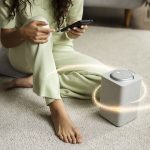Activated carbon filters are essential components in air purifiers, water purifiers, and other appliances designed to remove contaminants. Their effectiveness hinges on adsorption—a process where pollutants like volatile organic compounds (VOCs), odors, chlorine, and chemicals adhere to the carbon’s porous surface. But how long do carbon filters last? The answer depends on several factors, from usage conditions to filter quality. Let’s explore what determines their lifespan and how to maximize their efficiency.
What Is an Activated Carbon Filter?
Activated carbon filters consist of treated carbon with a vast network of microscopic pores. This structure creates a large surface area, enabling the carbon to trap gases, chemicals, and odors. Unlike mechanical filters (e.g., HEPA), which capture particles, activated carbon neutralizes gaseous pollutants through chemical bonding.
Common Uses:
- Air purifiers: Reduce smoke, cooking smells, and VOCs.
- Water filters: Remove chlorine, pesticides, and organic compounds.
Activated Carbon vs. HEPA Filters:
| Feature | Activated Carbon | HEPA |
|---|---|---|
| Targets | Gases, odors, chemicals | Particles (dust, pollen, dander) |
| Mechanism | Adsorption | Mechanical trapping |
| Replacement Frequency | 3–12 months (varies) | 6–24 months |
| Best For | Odors, VOCs, chemical fumes | Allergies, asthma, particle removal |
Once the pores become saturated with contaminants, the filter loses effectiveness and requires replacement.
Key Factors Influencing Lifespan
One common question users ask is how long does activated charcoal last in typical use. The answer varies widely depending on factors such as the pollution level, filter quality, and maintenance habits.
1. Usage Environment
The level of pollution in your home or workspace directly impacts filter longevity.
| Appliance | High-Risk Factors | Impact on Lifespan |
|---|---|---|
| Air Purifiers | Urban areas, pets, smokers, high humidity | 2–3 months (heavy use) |
| Water Purifiers | Heavy chlorine, sediment, hard water | 3–6 months (poor water quality) |
- Humidity/Temperature: High humidity reduces adsorption; heat may re-release trapped chemicals.
2. Filter Quality and Design
Critical design factors include:
Types of Activated Carbon:
| Type | Characteristics | Lifespan |
|---|---|---|
| Granular (GAC) | Loose carbon granules; affordable | Short to moderate |
| Powdered Block | Dense, compressed carbon; higher surface area | Longer |
Key Design Features That Influence Longevity:
The construction of the filter has a major impact on how long it lasts. For instance:
- Thicker carbon beds (higher weight/volume) offer more adsorption capacity, extending the replacement cycle.
- Pre-filters trap large particles before they reach the carbon layer, significantly reducing the load and wear.
- In water purifiers—particularly RO and UF systems—pre-filters and membrane stages remove sediment, chlorine, and microorganisms before water reaches the activated carbon filter. This multi-stage setup protects the carbon layer from early saturation and helps maintain water quality.
- HEPA + Activated Carbon combinations, especially when paired with a pre-filter and ionizer, can further optimize lifespan by distributing the purification workload across multiple layers.
Systems that incorporate pre-filters and activated carbon can significantly reduce the burden on each layer, especially the carbon filter, thereby extending its service life and lowering overall maintenance costs.
3. Maintenance Habits
- Replace pre-filters regularly.
- Clean reusable components.
- Follow manufacturer guidelines.
4. Manufacturer Specifications
Most brands provide estimates (e.g., 3–6 months for air purifiers), but real-world use varies.

Average Lifespan Ranges
| Appliance | Average Lifespan | Conditions |
|---|---|---|
| Air Purifiers | 3–6 months | Moderate use (smoke-free homes) |
| Water Purifiers | 6–12 months | Average water quality, standard consumption |
Signs Your Filter Needs Replacing
Watch For:
- Reduced airflow or water pressure.
- Lingering odors or bad tastes.
- Device alerts (smart filter indicators).
- Visible discoloration (darkened carbon).
What Happens If You Don’t Replace It?
Risks:
- Poor air/water quality: Contaminants bypass the filter.
- Bacterial growth: In water filters, stagnant organic matter breeds microbes.
- Higher energy costs: Appliances overwork to compensate.
- Chemical re-release: Saturated air filters may emit trapped pollutants.
Tips to Extend Filter Life
Best Practices:
- Use pre-filters to protect carbon layers.
- Monitor indoor humidity (ideally <60%).
- Follow maintenance schedules strictly.
- Avoid running appliances unnecessarily.
Conclusion
Activated carbon filters are essential for removing harmful gases, odors, and chemical contaminants. However, their effectiveness decreases as they become saturated. To extend their lifespan, it’s important to choose a system with layered filtration. In air purifiers, combining a pre-filter, HEPA filter, and activated carbon—possibly with an ionizer—helps distribute the workload and improve overall efficiency.
Similarly, in water purification systems, a multi-stage setup that includes sediment filters, activated carbon, and RO or UF membranes ensures that different contaminants are targeted at different stages. This not only improves filtration performance but also reduces the burden on the carbon filter, helping it last longer. With proper system selection, high-quality filters, and regular maintenance, you can ensure consistently clean air and water.


